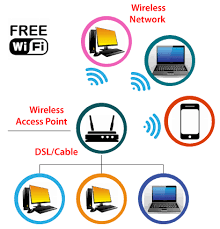Installing a fire alarm system is a crucial step in ensuring the safety and security of any building or property. A properly installed fire alarm system can provide early detection of fires, allowing occupants to evacuate quickly and minimizing potential damage to the property.
Here are some key steps involved in the installation of a fire alarm system:
- Assessment and Planning: The first step in installing a fire alarm system is to assess the layout and specific needs of the building. This includes identifying high-risk areas, determining the number of detectors required, and planning the placement of alarm devices.
- Selection of Equipment: Based on the assessment, suitable fire alarm equipment such as smoke detectors, heat detectors, alarms, control panels, and notification devices are selected. It is essential to choose equipment that meets safety standards and regulations.
- Wiring and Installation: Once the equipment is selected, the next step is wiring and installing the components. Proper wiring ensures that all devices are interconnected effectively and communicate with the control panel.
- Programming and Testing: After installation, the fire alarm system needs to be programmed according to the building’s specifications. Regular testing is also essential to ensure that all components are functioning correctly and that alarms are triggered promptly in case of a fire.
- Integration with Other Systems: In some cases, it may be necessary to integrate the fire alarm system with other building systems such as sprinklers or HVAC systems for enhanced safety measures.
- Maintenance and Monitoring: Regular maintenance of the fire alarm system is crucial to ensure its continued functionality. This includes checking batteries, testing sensors, updating software, and conducting routine inspections.
In conclusion, proper installation of a fire alarm system is essential for safeguarding lives and property in the event of a fire emergency. By following these key steps and ensuring regular maintenance, building owners can create a safe environment for occupants and minimize potential risks associated with fires.
Essential FAQs on Fire Alarm System Installation: Requirements, Standards, and Types
- What are the requirements for fire alarm installation?
- Can you install your own fire alarm system?
- What is the standard installation of a fire alarm system?
- What is the NFPA for installation of fire alarm system?
- How a fire alarm system is wired?
- How should fire alarms be installed?
- How is a fire alarm system installed?
- What are the 4 main types of fire alarm systems?
What are the requirements for fire alarm installation?
When it comes to fire alarm system installation, several requirements must be met to ensure the system’s effectiveness and compliance with safety standards. Some key requirements for fire alarm installation include conducting a thorough assessment of the building layout to determine the number and placement of detectors, selecting equipment that meets safety regulations and standards, proper wiring and installation of components to ensure seamless communication with the control panel, programming the system according to building specifications, regular testing and maintenance to ensure functionality, and potential integration with other building systems for enhanced safety measures. By meeting these requirements, a fire alarm system can effectively detect fires early, alert occupants promptly, and help minimize damage in case of a fire emergency.
Can you install your own fire alarm system?
Installing your own fire alarm system is not recommended due to the complexity and importance of such systems. Fire alarm systems play a critical role in detecting fires early, alerting occupants, and saving lives. Improper installation can lead to malfunctions, false alarms, or even failure to activate during a real emergency. It is highly advised to hire professional technicians who are trained and certified in fire alarm system installation to ensure that the system is installed correctly, complies with safety regulations, and functions effectively when needed. Safety should always be the top priority when it comes to fire protection measures in any building or property.
What is the standard installation of a fire alarm system?
The standard installation of a fire alarm system involves a systematic approach to ensure optimal safety and efficiency. Key components typically include smoke detectors, heat detectors, alarms, control panels, and notification devices strategically placed throughout the building. These components are interconnected through proper wiring to a central control panel that monitors and activates the alarms in case of a fire emergency. The installation process also involves adherence to relevant safety standards and regulations to guarantee the effectiveness of the system. Regular testing, programming, integration with other building systems, and ongoing maintenance are essential aspects of maintaining a standard fire alarm system installation for reliable performance in protecting lives and property.
What is the NFPA for installation of fire alarm system?
The NFPA (National Fire Protection Association) provides guidelines and standards for the installation of fire alarm systems to ensure the safety and effectiveness of these critical systems. Compliance with NFPA standards, such as NFPA 72, is essential in the installation process to meet regulatory requirements and industry best practices. These standards cover various aspects of fire alarm system installation, including device placement, wiring, testing procedures, maintenance protocols, and system integration. Adhering to NFPA guidelines helps to enhance the reliability and performance of fire alarm systems, ultimately contributing to a safer environment for occupants and property protection.
How a fire alarm system is wired?
When it comes to wiring a fire alarm system, it typically involves connecting various components such as smoke detectors, heat detectors, alarms, control panels, and notification devices in a networked configuration. The wiring process ensures that all these devices are interconnected and communicate effectively with the central control panel. Different zones within a building may require separate wiring to allow for targeted detection and response in case of a fire emergency. Proper wiring is crucial to ensure the system functions seamlessly and triggers timely alerts when detecting potential fire hazards. Regular testing and maintenance of the wired connections are essential to guarantee the reliability and effectiveness of the fire alarm system.
How should fire alarms be installed?
When it comes to installing fire alarms, several key considerations must be taken into account to ensure optimal functionality and effectiveness. Fire alarms should be strategically placed throughout the building to provide comprehensive coverage and early detection of potential fires. It is essential to follow the manufacturer’s guidelines and local fire safety regulations when determining the placement of smoke detectors, heat detectors, alarms, and control panels. Proper wiring and interconnection of alarm devices are crucial for seamless communication with the central control panel. Regular testing, maintenance, and integration with other building systems further enhance the reliability and efficiency of fire alarm installations. By adhering to best practices in installation procedures, building owners can significantly improve the overall safety and security of their premises.
How is a fire alarm system installed?
When it comes to installing a fire alarm system, several key steps are involved to ensure its effectiveness in detecting and alerting occupants in the event of a fire. The installation process typically begins with an assessment and planning phase, where the layout of the building is evaluated to determine the placement of detectors and alarms. Following this, suitable equipment is selected, including smoke detectors, heat detectors, control panels, and notification devices. Wiring and installation of these components are then carried out to ensure proper communication with the control panel. Programming and testing of the system are essential steps to verify its functionality, while integration with other building systems may also be necessary for comprehensive safety measures. Regular maintenance and monitoring are crucial post-installation to uphold the system’s reliability and performance over time.
What are the 4 main types of fire alarm systems?
There are four main types of fire alarm systems commonly used for different applications: Conventional Fire Alarm Systems, Addressable Fire Alarm Systems, Wireless Fire Alarm Systems, and Hybrid Fire Alarm Systems. Conventional systems divide a building into zones to detect fires, while addressable systems pinpoint the exact location of a fire for quicker response. Wireless systems offer flexibility in installation without the need for extensive wiring, and hybrid systems combine the features of both conventional and addressable systems for comprehensive fire detection and notification capabilities. Each type of system has its unique advantages and is chosen based on the specific requirements of the building or property.


